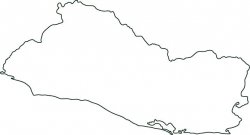
أجهزة الملاحة العربية
Your way to more knowledge
Product successfully added to your shopping cart
Quantity
Total
There are 0 items in your cart.
There is 1 item in your cart.
Total products
Total shipping
To be determined
Total
- Countries of the World
- Zip code in Jordan
- List of surahs in the Holy Qur'an
- All flags of the countries of the world
- Traffic signs in Jordan
- Population of world countries by country
- List of world capitals
- Car Brand Logos and Names
- International Calling Codes
- List of currencies of the world
- Country flags of the world with images and names
- Country codes names
- List of countries and dependencies by area
- Al-Quran Recitations mp3
- List of countries and dependencies by population
- World time zones by country
El Salvador
Official name: Republic of El Salvador
Also known as: República de El Salvador (Spanish)
Capital of El Salvador: San Salvador
Area of El Salvador: 21,041 km² (8,124 mi²) (151th)
Population of El Salvador: 6,338,193 (112th) - (2024 est.)
Location: Central America
Languages of El Salvador: Spanish (official), Nawat (among some indigenous)
Religions of El Salvador: Roman Catholic 36.82, Protestant 47.02% (Evangelical - unspecified 38.2%, Evangelical - Methodist 1.3%, Evangelical - Baptist 0.1%), No religion 12.98%, other 1.55% (2025 est.)
Organizations: United Nations
Border countries (2): Guatemala 199 km, Honduras 391 km.
Coastline: North Pacific Ocean 307 km (191 mi)
Maritime boundaries: Gulf of Fonseca
Administrative divisions of El Salvador
14 departments (departamentos, singular - departamento):
Ahuachapan, Cabanas, Chalatenango, Cuscatlan, La Libertad, La Paz, La Union, Morazan, San Miguel, San Salvador, San Vicente, Santa Ana, Sonsonate, Usulutan.
Area of El Salvador: 21,041 km² (8,124 mi²) (151th)
Population of El Salvador: 6,338,193 (112th) - (2024 est.)
Location: Central America
Languages of El Salvador: Spanish (official), Nawat (among some indigenous)
Religions of El Salvador: Roman Catholic 36.82, Protestant 47.02% (Evangelical - unspecified 38.2%, Evangelical - Methodist 1.3%, Evangelical - Baptist 0.1%), No religion 12.98%, other 1.55% (2025 est.)
Ethnic groups of El Salvador: Mestizo (mixed White and Indigenous) 86.3%, White 12.7%, Indigenous 0.2% (includes Lenca, Kakawira, Nahua-Pipil), Black 0.1%, other 0.6% (2007 est.)
Currency: US Dollar (USD; since 2001), Bitcoin (BTC; since September 2021), Salvadoran colón (no longer in circulation, still legal)
Calling code: (+503)Organizations: United Nations
Border countries (2): Guatemala 199 km, Honduras 391 km.
Coastline: North Pacific Ocean 307 km (191 mi)
Maritime boundaries: Gulf of Fonseca
Administrative divisions of El Salvador
14 departments (departamentos, singular - departamento):
Ahuachapan, Cabanas, Chalatenango, Cuscatlan, La Libertad, La Paz, La Union, Morazan, San Miguel, San Salvador, San Vicente, Santa Ana, Sonsonate, Usulutan.
Cities, towns, and villages
- San Salvador is the capital and largest city of El Salvador, approximately in the center of the country in a valley near the base of the San Salvador volcano. The city has a long history, with origins dating back to the Spanish conquest of the Pipil tribes.
- La Libertad is El Salvador's surfing beach
- San Francisco Gotera is a small city in Eastern El Salvador
- San Miguel, San Miguel department is the third largest city in El Salvador and center of agriculture and production. It is less cosmopolitan than the capital San Salvador in the West but the surrounding areas of San Miguel are very beautiful with many beaches around the city.
- Santa Ana, Santa Ana is the second largest city of El Salvador and a very important one in terms of agriculture and coffee production (coffee plantations, called fincas, cover much of the surrounding land outside of town and up the hills).
- Santa Tecla claims to be the country's second largest city, though it's really just a rather ordinary suburb of San Salvador
- Suchitoto is an important tourist destination partly due to its well-conserved colonial architecture and cobblestone roads that provide a sense of Spanish colonial living.
Natural resources: Hydropower, geothermal power, petroleum, arable land.

